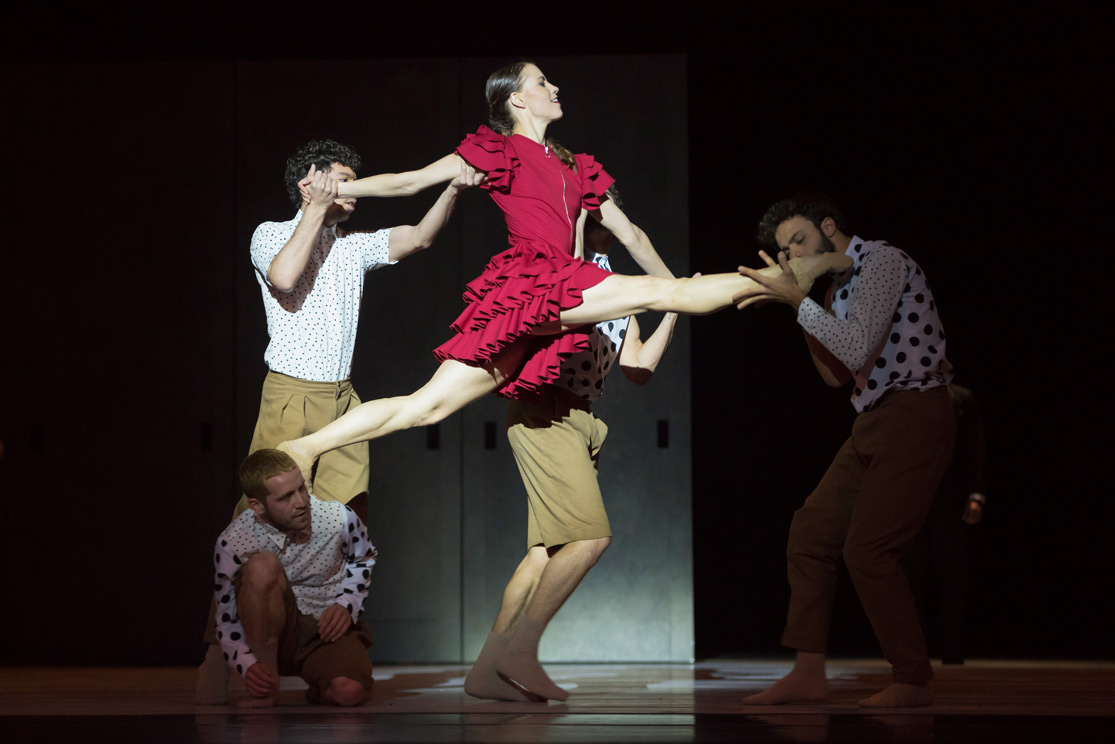Choreographer Johan Inger Reimagines ‘Carmen’
Spain’s National Dance Company to Perform Two Nights at the Granada

The role of Carmen casts a long shadow. In her iconic red dress, she wields her sexuality like a toreador’s blade, effortlessly attracting men and then showing no mercy when it pleases her to betray them. The story of Carmen likewise casts a long shadow over the world of ballet. Choreographers are drawn to Bizet’s irresistible music and pit their skills against the ever-growing body of achievement that has gone before them. On Tuesday-Wednesday, March 6-7, UCSB Arts & Lectures will present two performances of a new ballet version of Carmen by the Compañía Nacional de Danza (CND) de España from Madrid.
Created by Swedish choreographer Johan Inger for the CND in 2015, this Carmen has already won the prestigious Prix Benois de la Danse for choreography, an international ballet competition that bestows million-dollar bouquets of recognition on a small handful of artists annually. Tasked with reimagining this most Spanish of myths for the 21st century, and for no less an organization than the national dance company of Spain, Inger responded with something that renders the story more universal, while at the same time bringing out undertones of youth and innocence only hinted at in the original material. This is just one of the reasons that CND’s Carmen has become one of the most talked about new ballets of the decade.
The other big reason why people are excited about this production is that CND consistently fields some of the world’s most talented ballet dancers. For example, Kayoko Everhart, who will dance the role of Carmen on both nights in Santa Barbara, represents pretty much everything that’s newly possible given the heightened level of globalization that’s transformed the ballet landscape. Born in Tokyo to a Japanese mother and an African-American dad, Everhart moved to Tacoma, Washington, at age 7. Once she began dancing though, the world again became her stage. Study with the San Francisco Ballet led to an early professional start with the prestigious Tulsa Ballet. That’s where she discovered the work of choreographer Nacho Duato, artistic director of CND from 1990 to 2010. Enamored of the extraordinary dynamics that characterize Duato’s fluid, fast, expressive take on contemporary ballet, Everhart left for Spain, where she won a place in CND2, the company’s traveling corps. From there she progressed under Duato, and then under current CND artistic director José Carlos Martínez, to the pinnacle of the profession, a principal dancer position with a major European national company.
When I spoke with Everhart by phone from her home in Madrid, she expressed excitement about the upcoming engagement in Santa Barbara, saying that her family would be flying in to see the shows and adding that she was grateful to Inger for granting her the freedom to make the role of Carmen her own. Asked about the production’s most radical innovation — the introduction of a new character, a boy who witnesses Don José’s descent into homicidal despair — Everhart said that the boy “represents the innocence of Don José.” Of all the characters in Carmen, “Don José changes the most,” she said. “He starts out wanting to do the right thing, but he can’t hold on to it.” As for Carmen, “she feels she is free,” even when Don José stands guard over her, as in the Act One pas de trois where she flirts with two other men, Escamillo and Zúñiga.
This very modern version of Carmen is sure to be one of the highlights of the dance season at the Granada. Few companies in the world can compete with CND for sheer impact, and the interest of this stirring new production is not to be denied. It’s time to fall under the gypsy’s sexy spell one more time.
4·1·1
UCSB Arts & Lectures presents the Compañía Nacional de Danza de España in Carmen on Tuesday-Wednesday, March 6-7, 8 p.m., at The Granada Theatre (1214 State St.). Call 893-3535 or visit artsandlectures.ucsb.edu.



